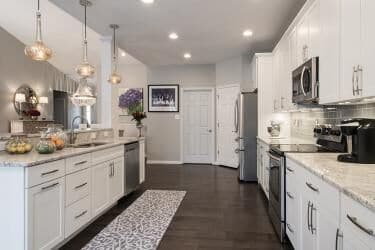Part of an Ongoing Blog Series
Details matter. This is true in so many realms, but especially in the interior design world.
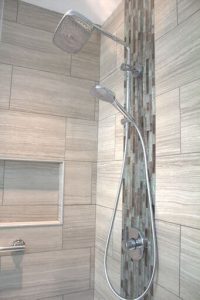
I find myself repeating this phrase often, especially when I hear from people who are considering decorating a new home, or renovating, without the help of a professional.
Why?
Because just about anyone can design a room. But to design a really great looking room?
That takes close attention to detail and that is where an interior designer is trained to excel.
So just how many small details come into play with a renovation or remodel? A LOT. More than you could ever imagine.
Whether designing a bathroom or bedroom, kitchen or family room, or even a sunroom — there are so many decisions that need to be made along the way, all of which add up to one big picture success or failure. And it all comes down to the details.
Lest you think I am overstating my point, I wanted to give a few examples here on this blog space. I figured I’d present these as a blog series, so I’m not overwhelming you with too much information at once.
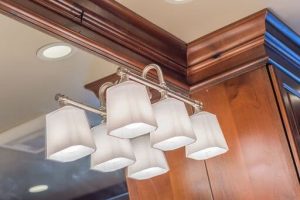
So stay tuned through the coming weeks and months, as I delve into some of this detailed design talk. For an easy way to follow along, just look for posts that appear under the article title, Details Matter.
And remember, these are just some of the choices that you might encounter when remodeling your home — choices that will be made easier, and turn out better, if you enlist the help of an interior designer.
So, let’s get started.
Cabinet Choices
In most homes, cabinets are everywhere — in the kitchen, family room, office, even the bedrooms. So if you are considering a remodel, you will most likely have to make some decisions about your cabinetry.
Now, on the surface, this may seem like an easy thing: how many, what size, etc?
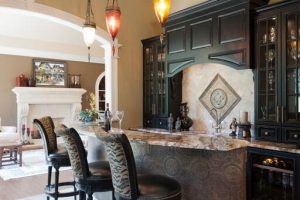
But there’s a lot more that goes into it. And because cabinets can be expensive, you’ll want a professional to help guide you through this process, to make sure you make wise and lasting decisions.
First, you’ll be making selections relative to the type of cabinetry: stock, semi-custom and custom are the main categories here, listed in order of price.
Obviously, the closer to custom you go, the more decisions you’ll have to make. This can be a positive or a negative depending upon your preferences. So take time to think about what your bandwidth is (of course, if you hire me as an interior designer, I can help take the aggravation out of the decision making process).
Next, you’ll want to choose how the cabinet doors will sit relative to the face frame.

Inset cabinets are set inside the cabinet frame and sit flush with the face of the cabinet when closed. They are the most expensive choice, and tend to do better in larger, more traditionally-styled kitchens, for a more seamless look.
Full overlay cabinets cover the entire face frame, for a similar look as inset but at a slightly lower pricetag. These fit well with a contemporary look.
A final option is partial overlay, where the door sits on the cabinet face with a gap between the doors. This is the most economical option of the three.
Which you choose will depend upon a lot of things, including your project cost, room style, functional needs and more.
And your decisions don’t end there.
Delving Deeper
You’ll also need to choose a cabinet style. To warn, there are DOZENS of styles to choose from. Slab, flat panel, shaker, raised panel, beaded, glass inset, mission, arched cathedral — the list goes on and on.
Here, it can be extremely helpful to have a design professional help decide what will best achieve your desired look and fit with the rest of your room.
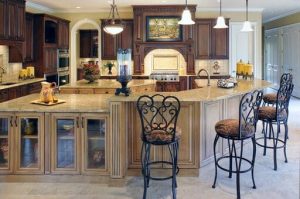
For instance, a flat panel is very versatile and can work with a transitional style home or even a more traditional style. But an arched cathedral would only go with certain traditional looks.
You’ll also have to make decisions on the cabinet material. Oak? Hickory? Maple? Birch? Ash? Pine?
I know, it’s a lot, and that’s not even half the options out there.
If I am helping to guide you through this choice, we will consider the durability of each material, as well as graining and how well it takes to staining or paint, along with other factors such as cost.
If you do choose to paint your cabinets, we’ll need to go through paint selection as well, which will mean color matching with your walls and any other tones in your room.
And of course, there will be broader questions of functionality and layout, which can be more complicated if you are designing for a kitchen or other area that requires more specific storage needs.
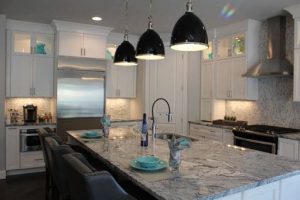
I told you design work involves a lot of detail!
More Details to Discuss
Now, as I mentioned, this is just the start of the blog series, and there are limitless topics to explore. For instance, those cabinets we just dissected above will also need some fashionable hardware. So we will definitely be having some fun with this blog series.
And if you ever have any specific requests of design choices you’d like to see discussed here, please feel free to reach out with your requests or suggestions. I’m eager to share what I know.

